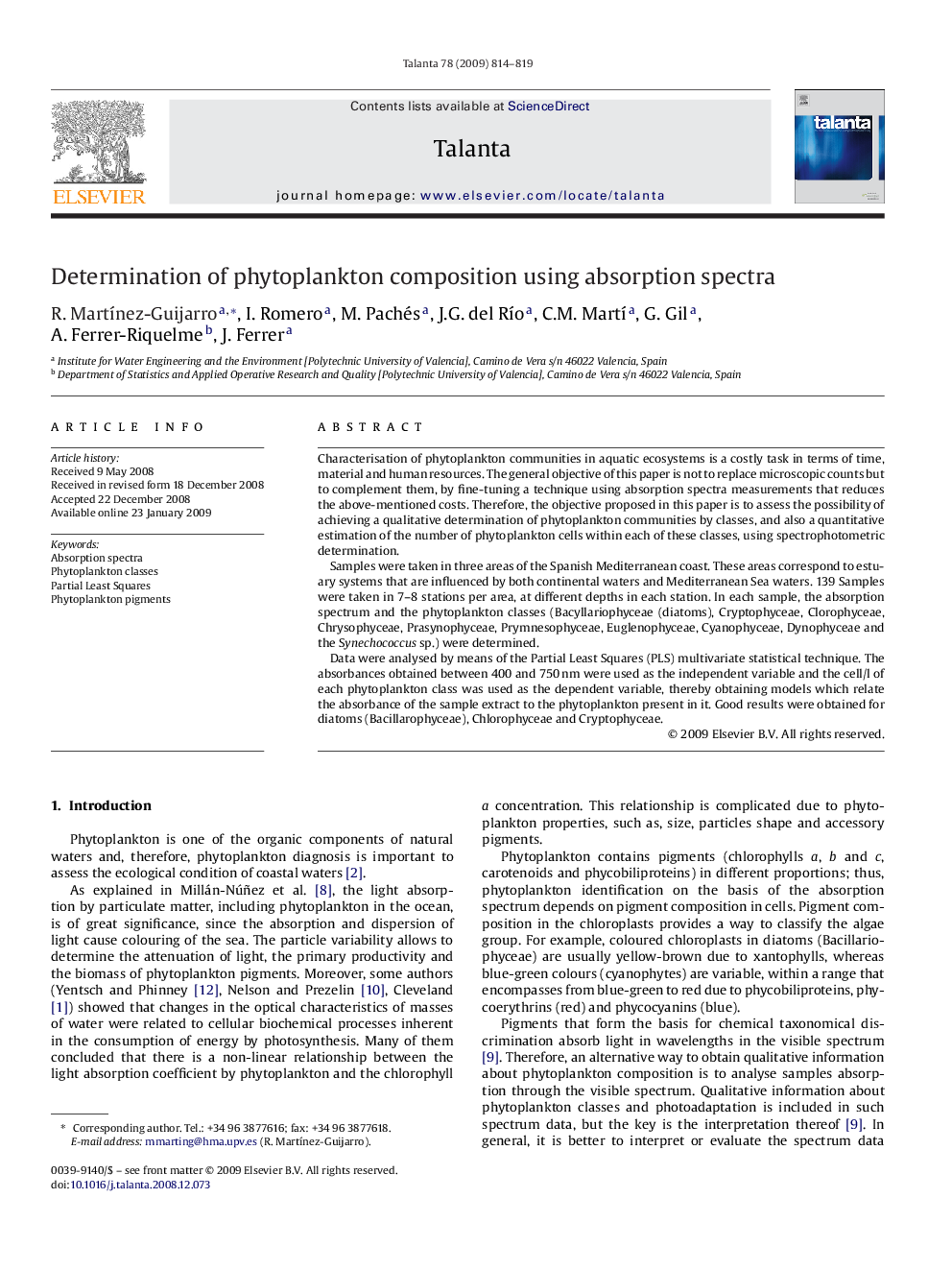| Article ID | Journal | Published Year | Pages | File Type |
|---|---|---|---|---|
| 1244908 | Talanta | 2009 | 6 Pages |
Characterisation of phytoplankton communities in aquatic ecosystems is a costly task in terms of time, material and human resources. The general objective of this paper is not to replace microscopic counts but to complement them, by fine-tuning a technique using absorption spectra measurements that reduces the above-mentioned costs. Therefore, the objective proposed in this paper is to assess the possibility of achieving a qualitative determination of phytoplankton communities by classes, and also a quantitative estimation of the number of phytoplankton cells within each of these classes, using spectrophotometric determination.Samples were taken in three areas of the Spanish Mediterranean coast. These areas correspond to estuary systems that are influenced by both continental waters and Mediterranean Sea waters. 139 Samples were taken in 7–8 stations per area, at different depths in each station. In each sample, the absorption spectrum and the phytoplankton classes (Bacyllariophyceae (diatoms), Cryptophyceae, Clorophyceae, Chrysophyceae, Prasynophyceae, Prymnesophyceae, Euglenophyceae, Cyanophyceae, Dynophyceae and the Synechococcus sp.) were determined.Data were analysed by means of the Partial Least Squares (PLS) multivariate statistical technique. The absorbances obtained between 400 and 750 nm were used as the independent variable and the cell/l of each phytoplankton class was used as the dependent variable, thereby obtaining models which relate the absorbance of the sample extract to the phytoplankton present in it. Good results were obtained for diatoms (Bacillarophyceae), Chlorophyceae and Cryptophyceae.
